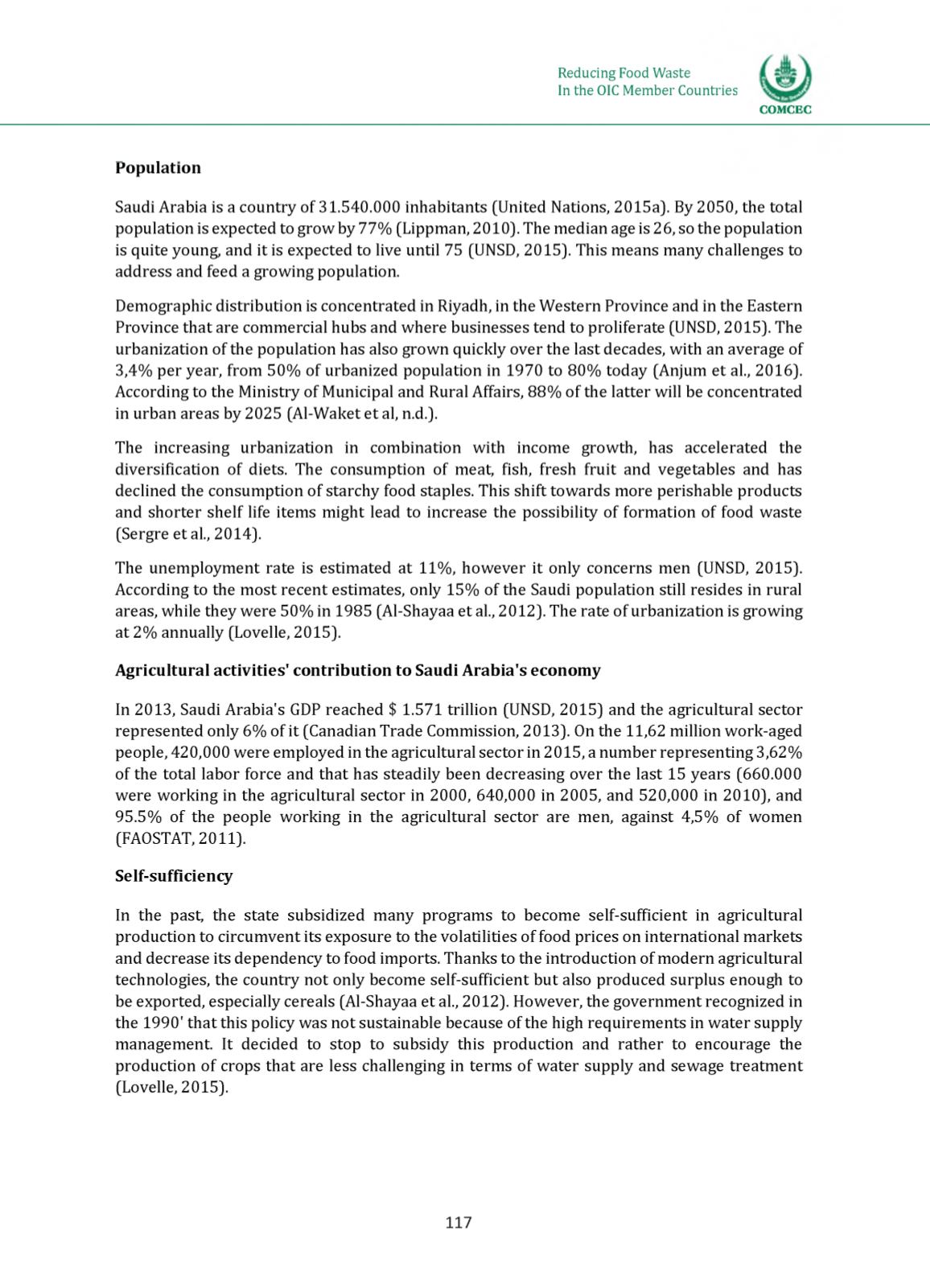

COMCEC
Reducing Food Waste
In the OIC Member Countries
Population
Saudi Arabia is a country of 31.540.000 inhabitants (United Nations, 2015a). By 2050, the total
population is expected to grow by 77% (Lippman, 2010). The median age is 26, so the population
is quite young, and it is expected to live until 75 (UNSD, 2015). This means many challenges to
address and feed a growing population.
Demographic distribution is concentrated in Riyadh, in the Western Province and in the Eastern
Province that are commercial hubs and where businesses tend to proliferate (UNSD, 2015). The
urbanization of the population has also grown quickly over the last decades, with an average of
3,4% per year, from 50% of urbanized population in 1970 to 80% today (Anjum et al., 2016).
According to the Ministry of Municipal and Rural Affairs, 88% of the latter will be concentrated
in urban areas by 2025 (Al-Waket et al, n.d.).
The increasing urbanization in combination with income growth, has accelerated the
diversification of diets. The consumption of meat, fish, fresh fruit and vegetables and has
declined the consumption of starchy food staples. This shift towards more perishable products
and shorter shelf life items might lead to increase the possibility of formation of food waste
(Sergre et al., 2014).
The unemployment rate is estimated at 11%, however it only concerns men (UNSD, 2015).
According to the most recent estimates, only 15% of the Saudi population still resides in rural
areas, while they were 50% in 1985 (Al-Shayaa et al., 2012). The rate of urbanization is growing
at 2% annually (Lovelle, 2015).
Agricultural activities' contribution to Saudi Arabia's economy
In 2013, Saudi Arabia's GDP reached $ 1.571 trillion (UNSD, 2015) and the agricultural sector
represented only 6% of it (Canadian Trade Commission, 2013). On the 11,62 million work-aged
people, 420,000 were employed in the agricultural sector in 2015, a number representing 3,62%
of the total labor force and that has steadily been decreasing over the last 15 years (660.000
were working in the agricultural sector in 2000, 640,000 in 2005, and 520,000 in 2010), and
95.5% of the people working in the agricultural sector are men, against 4,5% of women
(FAOSTAT, 2011).
Self-sufficiency
In the past, the state subsidized many programs to become self-sufficient in agricultural
production to circumvent its exposure to the volatilities of food prices on international markets
and decrease its dependency to food imports. Thanks to the introduction of modern agricultural
technologies, the country not only become self-sufficient but also produced surplus enough to
be exported, especially cereals (Al-Shayaa et al., 2012). However, the government recognized in
the 1990' that this policy was not sustainable because of the high requirements in water supply
management. It decided to stop to subsidy this production and rather to encourage the
production of crops that are less challenging in terms of water supply and sewage treatment
(Lovelle, 2015).
117
















